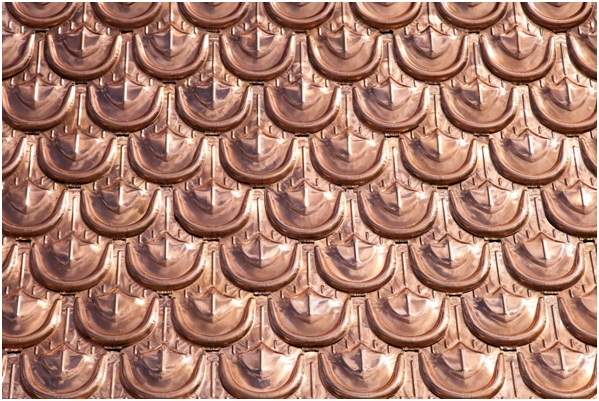Metal Roofs Making A Design Statement

At the Toronto Home Show last month, there were great design ideas for new decking materials, hot colors for living rooms and kitchens and unique tiling options. What was more surprising to designers (but not roofing contractors) is how popular metal roofs have become, moving from urban areas to main stream suburbia.

Although metal has been used as a roofing material for centuries, they have now become a fashion statement by architects and builders who say a metal roof is an ideal way to showcase a part of a dwelling that is often treated as a design afterthought.
“The roof is really the fifth façade of the house, especially when you’re considering it as a pitched roof,” says Meg Graham, a principal architect at superkül, a Toronto-based architecture firm.
Let’s look at the reasons behind this new trend.
Metal roofs date back to Jerusalem in 970 BC and later found their way to the Virgin Islands, where they could withstand hurricane winds, earthquakes and fire. In 27 B.C., the Roman used copper to cover the Pantheon. In fact, the copper roof of Hildersheim Cathedral, installed in 1280 A.D., still exists.
In 1892, the Robert L. Merwin company opened in St. Croix and introduced corrugated metal roofing on a much larger scale. Fast forward to the twentieth century, when steel, advances in automation, and improved manufacturing techniques increased the popularity of metal roofing substantially. Now, in the 21st century, manufacturing and coating processes have made metal roofs not only economically feasible, but striking as well.
Initially, metal roofs suffered from a series of setbacks, including leaks caused by the expansion and contraction of the metal and the noisiness from rain or hail storms.
Today’s metal roofs have overcome these disadvantages. Newer metal roofs are made of:
A tin roof uses a softer metal that is treated with tin and lead.
Galvanized steel is made from alloyed steel with a protective coating of zinc. Very rust resistant.
Aluminum roofs are becoming more popular because they are low maintenance, resist corrosion and can save you thousands on heating and cooling bills depending on where you live.
Although the longest lasting of all roof metals, these roofs are the most expensive and the copper can be difficult to obtain.
A metal roof is more expensive upfront. A metal roof is generally two to three times more expensive than an asphalt shingle roof. However, in terms of price, it is similar to a tile or cedar shake roof and slightly less expensive than a slate roof.
The beauty of metal roofs is they come in a variety of colors (earth, new or weathered cedar, traditional), shapes and shingle types. There are even metal roofs that simulate tile, made to look like clay, in Spanish, Roman and Mediterranean styles.

In addition to their environmental friendliness, and longevity, architects are now suggesting metal roofs because they have come a long way stylistically.
“New products coming on the market look like shingles, and there are new products like paint coatings. … There’s a lot more variety now, and people are seeing the merits of it,” says Steve Fox, general manager of the Canadian Sheet Steel Building Institute, a Cambridge, Ont.-based industry association.
Metal roofs have always been popular on barns, banks, shopping malls and restaurants, but are now making their way into the residential arena. Why? Because they can take whatever Mother Nature dishes out!
So architects and builders are catching on to what roofing contractors have known all along. A roof can either make a statement or try and be inconspicuous. Metal roofs are becoming more and more popular for commercial, residential, agricultural and industrial applications because of all the textures, colors, and materials available. The advantages clearly outweigh the disadvantages, because if you consider the price over its lifespan and include maintenance costs, metal will clearly win. One of your biggest challenges will be finding a roofing contractor who has the equipment and knowledge to properly install or repair a metal roof.
License: Royalty Free or iStock
source: 123rf.com
License: Royalty Free or iStock
source: 123rf.com
Robert Landry is co-owner/partner of The Cutting Edge Roofing in Pickering, Ontario, Canada. Robert has more than 25 years’ experience in the commercial and residential roofing industry and has led the company to its current status as an award-winning roofing provider with a Best of 2012 Homestar Award in the Roofing Division. He is avid ice hockey fan and enjoys spending his free time with his family.
